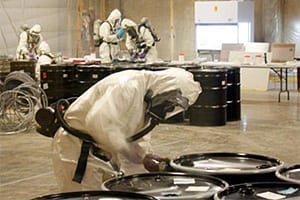The U.S. Environmental Protection Agency (EPA), along with federal partners, this week announced the results of a multi-year project called Bio-Response Operational Testing and Evaluation (BOTE) that tested and evaluated decontamination techniques for a biological incident.
“The information gained from this project gives communities tested decontamination methods and real world guidance to inform future response efforts,” said Lek Kadeli, acting assistant administrator of EPA’s Office of Research and Development. “Results of this collaborative research effort is helping make the United States and our communities more secure, better prepared, and increasingly resilient.”
EPA plays an important role in helping to prepare and protect the country against chemical, radiological and biological threats. As part of that role it is necessary to test decontamination techniques in real world situations to put the best methods into practice. The project also examined the associated costs of each method, and the expense of managing the waste cleanup.
Researchers released Bacillus atropheus, a harmless anthrax substitute that mimics the behavior of biological spores into a test facility that was modeled on common layouts found in homes and office buildings. Each room included a variety of materials that required decontamination, such as carpet, fabric and wood. Three decontamination methods were tested in the facility. One method used a pH-adjusted bleach, and the other scenarios employed the use of two different fumigants.
The study results found that the effectiveness of each decontamination method varied based on certain conditions, such as the amount of humidity and temperature in the room. The information gained during this exercise will help guide future decontamination decisions and help to ensure a more effective response to biological incidents.
The BOTE project involved more than 300 participants, including on-scene coordinators from around the United States and National Guard Civil Support Teams that may be called in to help in such an incident. Findings have already been used as a guide to help decontaminate other incidents, including decontamination following the 2013 ricin events. The results of this research will help provide state and local leaders, on-scene coordinators, waste managers and others with a guideline for effective decontamination in the event of a biological threat.
Read BOTE project report: Bio-Response Operational Testing and Evaluation (BOTE) Project – Phase 1: Decontamination Assessment.



